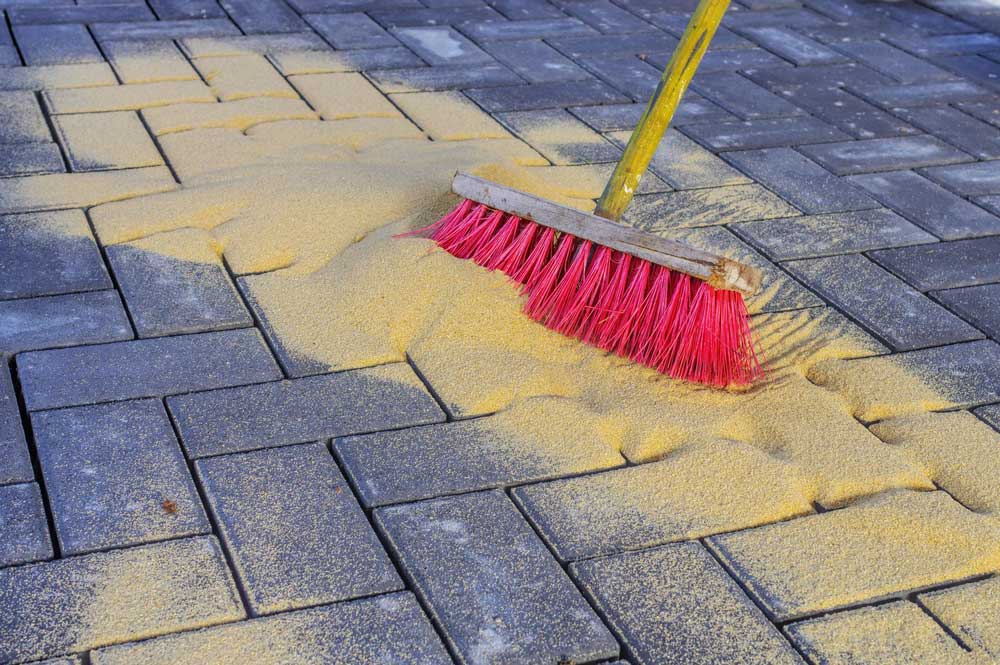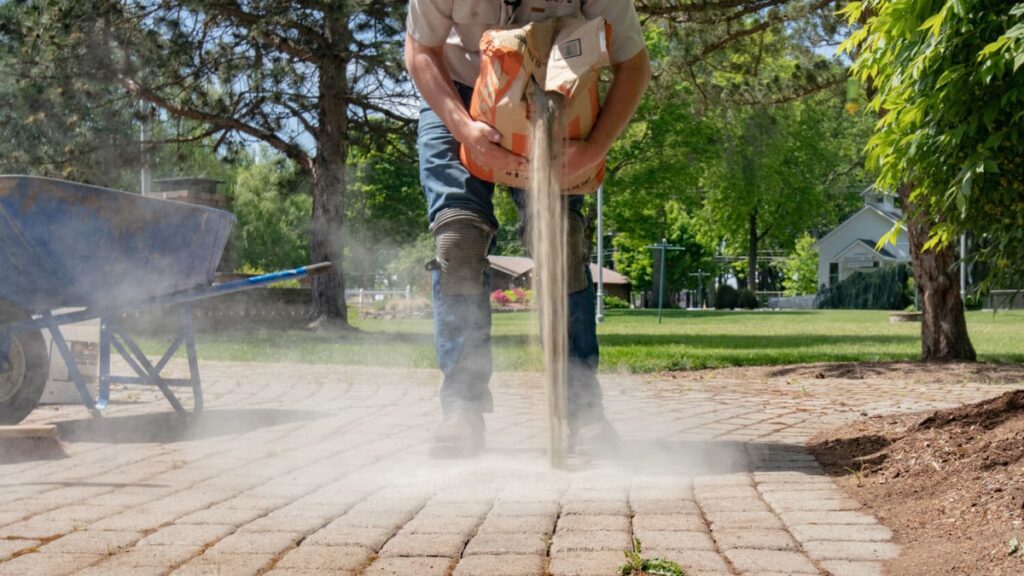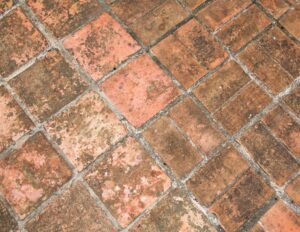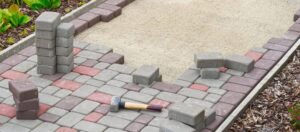At this point, pavers are already basically selling themselves. It is no secret that they are one of the most reliable elements of the hardscape industry. However, what is still unknown for the majority of people, is the fact that, without polymeric sand, pavers would not be as popular as they are today.
So what makes polymeric sand so important in a paver installation, and how exactly does it work alongside pavers? Our goal is to answer these questions and give polymeric sand some well deserved recognition.
So let’s start by first talking about what exactly is polymeric sand and how does it differ from regular sand, and then explain why it is such a good choice to be used alongside pavers.
Jump to:
What is Polymeric Sand?
The best way to think of polymeric sand is to see it in comparison to regular sand.
Regular sand is composed of several minerals broken into microscopic pieces due to the erosion effect of the sea waves. The particular composition of sand from a specific area varies according to what minerals can be found in that area.
So sand can be filtered, in a way, to have more or less of a specific mineral. That’s how you get variations of sand. Like silica sand, which is composed almost exclusively of quartz or mason sand, which is filtered until it has only very small particles.
Polymeric sand is one of those types. It is a type of sand that is filtered until it has only very fine grains, which are then mixed with several additive particles and polymers.
The objective of these particles and polymers is to react with water to become a powerful binding agent. Once placed, the polymeric sand is wet and locks everything in place.
How is that good for a paver installation? Well, to understand that, we have to explain to you what is an interlocked system.

Interlocked System
Pavers are incredibly resistant blocks of a specific material, like concrete or porcelain, but what really makes them shine is the interlocked system they create alongside polymeric sand.
Thanks to that system, the pavers can slightly shift around and distribute the weight evenly amongst themselves instead of facing them head on. So, think of a “net” of incredibly resistant individual pieces that can adapt to even the heaviest weights.
The pavers are the brute force, while the polymeric sand acts as the malleable effect. That’s how they work together, and that’s how a perfect system of weight distribution is created.
So if the pavers are the rock stars, the polymeric sand is what help them shine.
How to Use Polymeric Sand
The polymeric sand is added only at the final step of an installation, once all the pavers are in place already.
Adding it couldn’t be simpler. You simply pour it carefully around the entire installation, aiming to fill all the joint between the pavers. You’ll do that with the help of a brush, sweeping the sand in the direction of the joint until they are completely filled.
Both the pouring and the sweeping must be done carefully to avoid too much dust. After all the joint are filled, you need to thoroughly remove the excess sand, either by sweeping it or using a leaf blower. The more textured are your pavers, the harder this will be.
However, this is extremely important, because the next step is to wet the sand, and any sand remaining in the surface will create a film that will remain in your installation for a while, giving it a stained look.
That’s one of the main reasons many people (wrongfully) choose to not use polymeric sand. However, if you apply it properly, it won’t have that problem.
And even if you do have it, the stained look is not permanent, and it usually fades away after a few weeks. The benefits of using polymeric sand greatly surpass this minor inconvenience.

Recommended by Professionals
Any qualified hardscape professional will tell you the same thing: polymeric sand is the way to go on a paver installation.
A well locked installation with polymeric in combination with sealing can make a paver installation last for decades without causing any troubles. So, just as important as the choice of paver themselves, is the correct installation techniques and maintenance practices.
Many people choose to tackle a paver installation from a DIY perspective, and while that is fine for small projects, bigger ones should be left in charge of qualified professionals.
We here at JS Brick have helped countless homeowners with their installations during our 20 years of activity, so we know how important it is to have good practices and focus on the results.
We always recommend is look for professionals in your area to help you with your installation. And if you happen to be around the Sarasota and Manatee counties, our area of activity, why not give us a call to help you?
You can contact us anytime at +1 941 586 9140 or email us at [email protected]. We would be happy to hear from you and help you with any hardscape need you might have.



